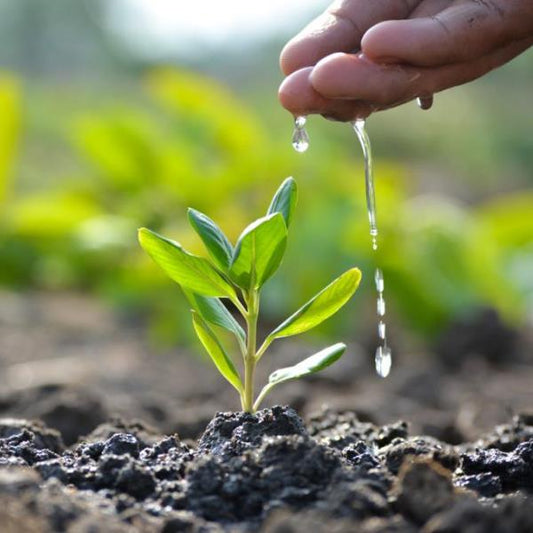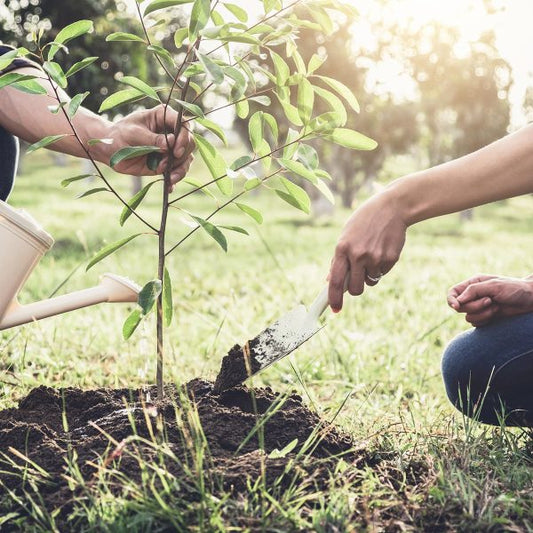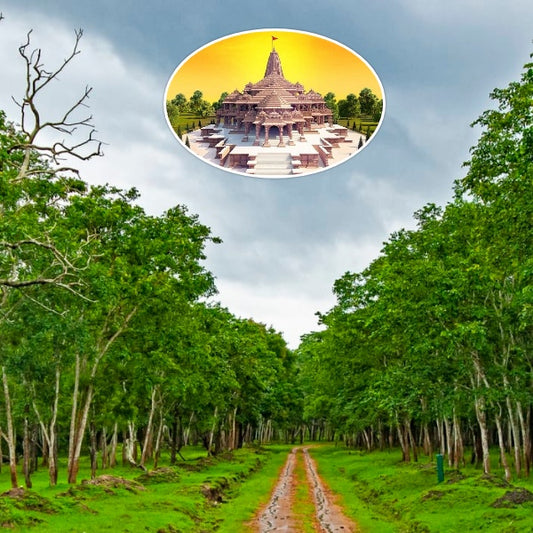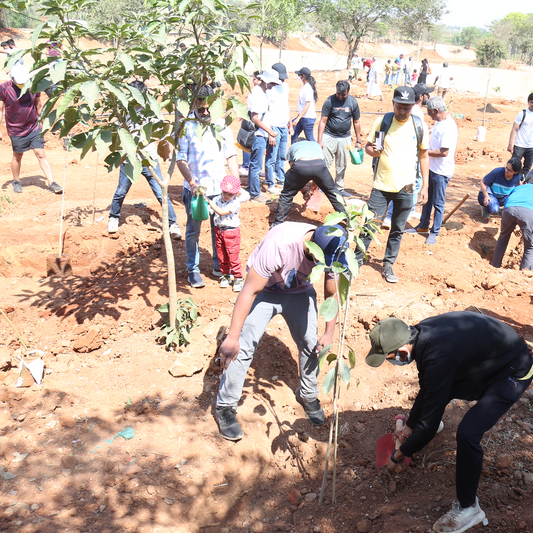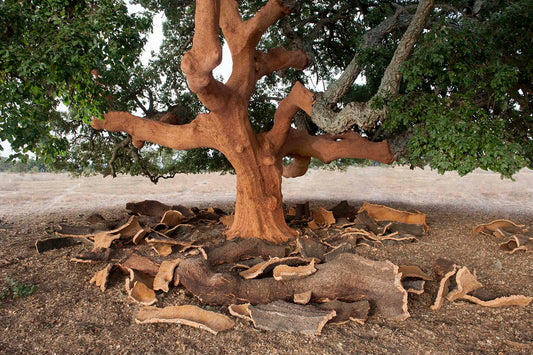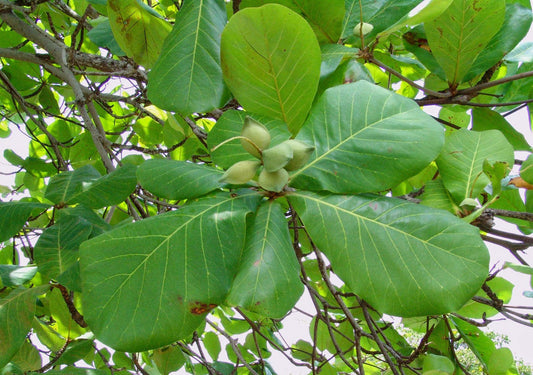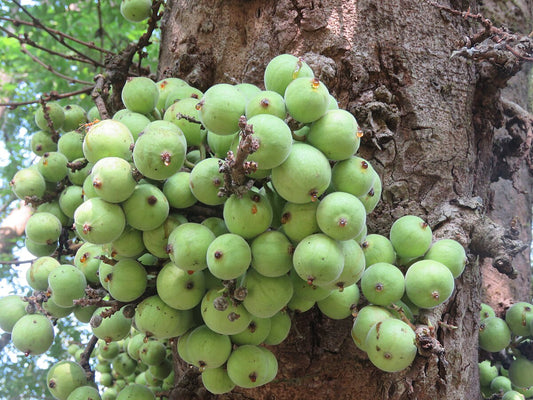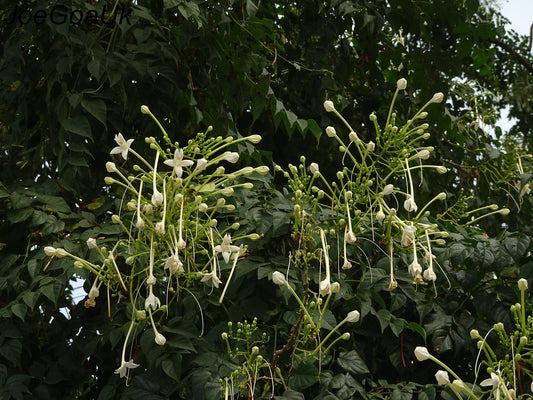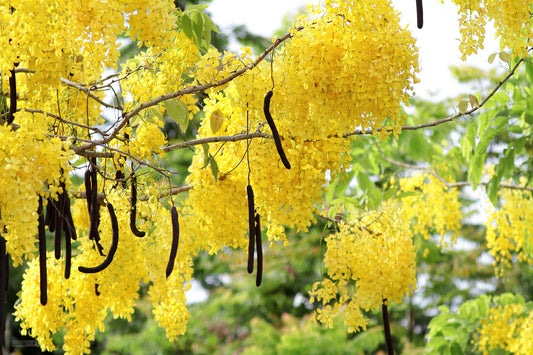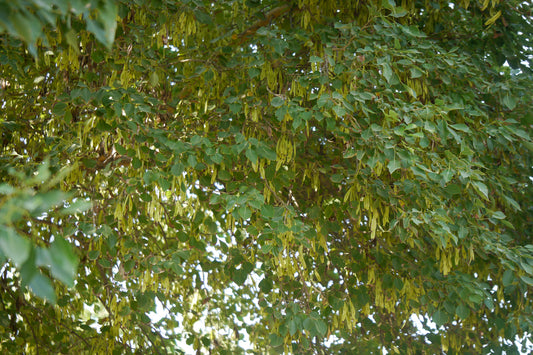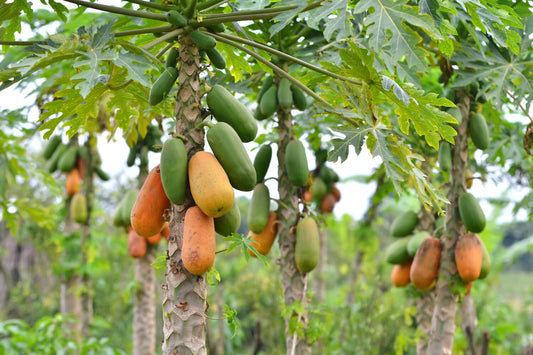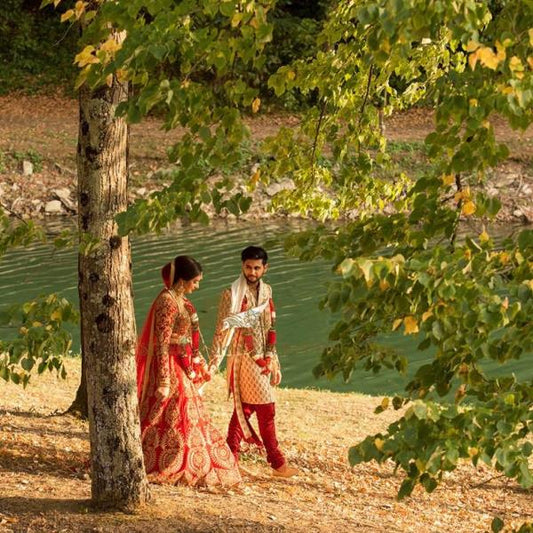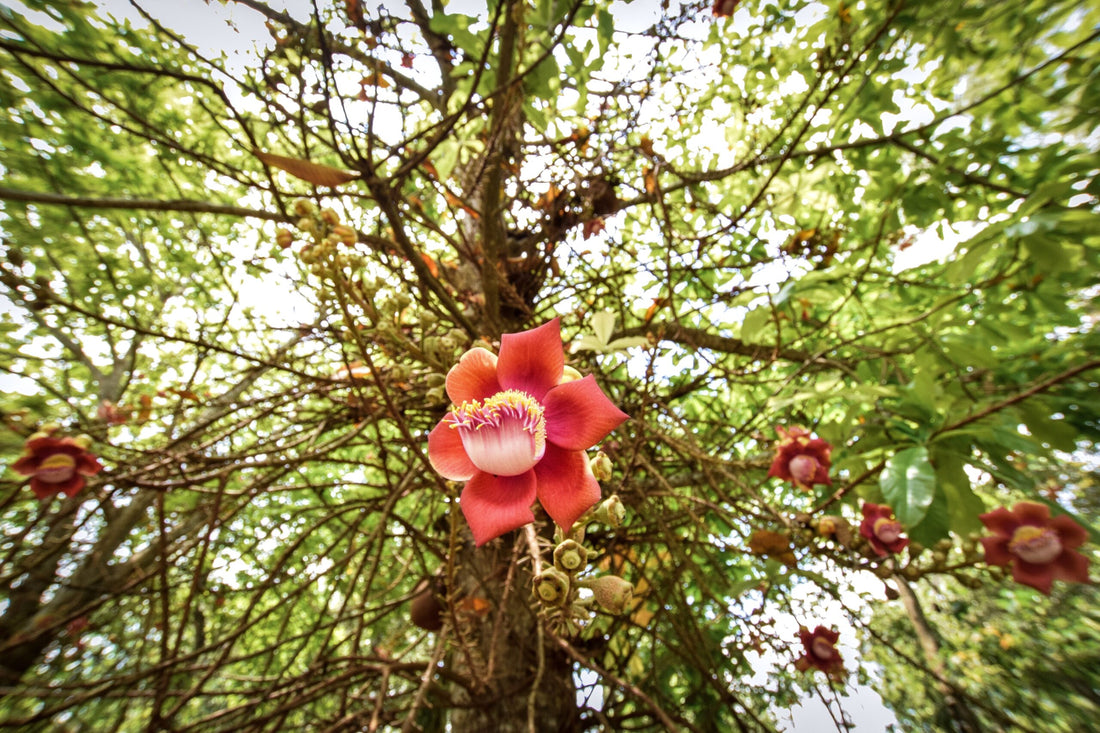

The Sal tree (Shorea robusta) stands as a majestic emblem of biodiversity and cultural significance, revered for its towering presence and versatile utility. Native to the Indian subcontinent, this magnificent species has long been celebrated for its resilience, longevity, and myriad eco Read more
Trending
Trees for Corporates
Sal Tree
You may also like
Corporate Plantations
Sal Tree Facts
Explore interesting facts about the Sal tree, renowned for its large canopy, valuable timber, and cultural significance. Learn about its botanical name (Shorea robusta), native range in South Asia, and ecological importance in tropical forests.
Sal Tree Care
Discover essential care tips for growing and maintaining Sal trees in forests, plantations, and urban landscapes. From selecting suitable planting sites to managing soil, water, and pests, learn how to ensure the health and vitality of these iconic trees.
Sal Tree Timber Uses
Explore the diverse uses of Sal wood in construction, furniture making, and handicrafts. Known for its strength, durability, and resistance to decay, Sal timber is prized for its versatility and cultural significance in South Asian societies.
Sal Tree Conservation
Learn about conservation efforts aimed at protecting Sal trees and their forest habitats from threats such as deforestation, illegal logging, and habitat degradation. Discover initiatives focused on habitat restoration, community engagement, and sustainable forestry practices to ensure the long-term survival of these valuable trees.
Sal Tree Medicinal Uses
Explore the medicinal properties of Sal leaves, bark, and resin in traditional medicine systems. From treating fevers and skin ailments to promoting wound healing and relieving gastrointestinal disorders, Sal has been valued for its therapeutic benefits for centuries.
Sal Tree Symbolism
Delve into the cultural symbolism of the Sal tree in Hindu mythology, religious rituals, and social customs. Revered for its association with fertility, abundance, and divine blessings, the Sal tree symbolizes prosperity, strength, and spiritual connection in South Asian culture.
Sal Tree Habitat
Learn about the natural habitat of Sal trees, including tropical and subtropical forests with well-drained soil and high rainfall. From lowland plains to foothills and river valleys, Sal trees thrive in diverse ecosystems, providing habitat for wildlife and regulating water cycles.
Sal Tree Growth Rate
Gain insights into the growth rate and development of Sal trees under optimal growing conditions. With rapid initial growth and slower maturation, Sal trees can attain impressive heights and girth, contributing to the structural complexity and biodiversity of forest ecosystems.
Sal Tree Pruning
Learn about the importance of pruning Sal trees to remove deadwood, promote healthy growth, and enhance timber quality. Explore pruning techniques, timing, and safety precautions for maintaining productive and sustainable Sal forests.
Sal Tree Flowering Season
Discover the flowering season of Sal trees and the factors influencing bloom timing and intensity. From environmental cues such as temperature and rainfall to tree age and health, various factors contribute to the spectacular floral displays of Sal trees in spring.
Sal Tree Leaf Characteristics
Explore the distinctive characteristics of Sal leaves, including their large size, glossy texture, and compound structure. With adaptations for reducing water loss and deterring herbivores, Sal leaves are well-suited to tropical environments with high humidity and sunlight.
Sal Tree Root System
Learn about the root system of Sal trees and its role in anchoring the tree, accessing water and nutrients, and stabilizing soil. With deep taproots and lateral spreading roots, Sal trees contribute to soil fertility, erosion control, and water retention in forest ecosystems.
Sal Tree Wildlife Habitat
Discover the importance of Sal trees as habitat and food sources for wildlife in tropical forests. From birds and mammals to insects and reptiles, Sal trees support a diverse array of species, contributing to biodiversity conservation and ecological balance in their native habitats.
Sal Tree Soil Requirements
Learn about the soil requirements for growing Sal trees and optimizing their health and growth in tropical landscapes. From well-drained, loamy soils to sandy or clayey substrates with good aeration and moisture retention, Sal trees thrive in diverse soil types found in their native habitats.
Sal Tree Pest and Disease Management
Discover common pests and diseases that affect Sal trees and strategies for prevention and control. From fungal pathogens and wood borers to leaf-chewing insects and root rot, proactive management practices can help minimize the impact of pests and diseases on tree health and productivity.
Sal Tree Root Pruning
Learn about root pruning techniques for Sal trees to address root-related issues and promote tree health and stability in forests and plantations. From removing circling roots and root girdling to improving soil structure and drainage, root pruning can enhance the vigor and longevity of Sal trees.
Sal Tree Indigenous Knowledge
Explore traditional knowledge and practices associated with Sal trees in indigenous cultures and forest-dwelling communities. From folklore and rituals to ecological wisdom and sustainable resource management, Sal trees are deeply intertwined with human societies and natural landscapes in South Asia.
Sal Tree Ethnobotany
Learn about the ethnobotanical uses of Sal trees in local cuisines, crafts, and livelihoods. From harvesting edible fruits and seeds to collecting resin and weaving baskets from palm leaves, Sal trees provide a wealth of resources and cultural heritage for indigenous peoples and rural communities.
Sal Tree Logging Practices
Explore sustainable logging practices for harvesting Sal timber while conserving forest ecosystems and biodiversity. From selective cutting and reforestation to community-based forest management and certification schemes, responsible logging practices can ensure the long-term viability of Sal forests and livelihoods.
Sal Tree Cultural Heritage
Discover the cultural heritage and historical significance of Sal trees in art, literature, and religious traditions. From ancient texts and epic poems to temple carvings and folk songs, Sal trees have inspired human creativity and reverence for nature across generations and civilizations.
FAQ
What is a Sal tree?
The Sal tree, scientifically known as Shorea robusta, is a large, deciduous tree native to the Indian subcontinent and Southeast Asia. Revered for its timber, resin, and cultural significance, the Sal tree holds a prominent place in the ecology and culture of the region.
Where are Sal trees commonly found?
Sal trees are commonly found throughout the Indian subcontinent, including India, Nepal, Bhutan, Bangladesh, and Myanmar. They thrive in tropical and subtropical climates and are often found in moist deciduous forests, river valleys, and lowland plains.
What are the characteristics of Sal trees?
Sal trees are characterized by their tall, straight trunks, spreading crowns, and large, leathery leaves with serrated margins. They produce small, fragrant flowers that are yellowish-white in color, followed by winged seeds that are dispersed by wind.
How tall do Sal trees grow?
Sal trees can grow to impressive heights, reaching up to 30-35 meters (98-115 feet) tall in favorable growing conditions. They have a straight, cylindrical trunk and develop a broad, spreading crown with age, providing shade and habitat for wildlife.
What is the scientific name of the Sal tree?
The scientific name of the Sal tree is Shorea robusta, belonging to the family Dipterocarpaceae. The genus name "Shorea" refers to the botanist Sir John Shore, while the species epithet "robusta" indicates the tree's robust and sturdy nature.
When do Sal trees bloom?
Sal trees typically bloom in spring, producing clusters of small, fragrant flowers that attract bees, butterflies, and other pollinators. The flowering period may vary depending on local climate conditions and environmental factors.
How to care for Sal trees?
To care for Sal trees, plant them in well-drained soil in a location with full sunlight. Provide regular watering, especially during the dry season, and mulch around the base of the tree to retain moisture and suppress weeds. Prune as needed to remove dead or diseased branches and promote healthy growth.
What are the benefits of planting Sal trees?
Planting Sal trees offers several benefits, including providing valuable timber for construction, furniture, and fuelwood, enhancing biodiversity in forests, and supporting local livelihoods. They are also valued for their cultural and religious significance in Hindu mythology and traditional medicine.
Are Sal trees suitable for urban environments?
Sal trees are not commonly planted in urban environments due to their large size and specific growing requirements. However, they can be used in parks, botanical gardens, and other green spaces where their majestic presence and ecological value are appreciated.
How to propagate Sal trees?
Sal trees can be propagated from seeds or cuttings. Collect mature seeds from the tree during the fruiting season and sow them in containers filled with well-drained potting mix. Alternatively, take semi-hardwood cuttings from healthy, mature trees and root them in a rooting hormone solution.
What are the common pests and diseases affecting Sal trees?
Common pests affecting Sal trees include defoliating insects, bark beetles, and wood borers, while diseases such as leaf spot and root rot can also occur. Proper forest management practices, including thinning, pruning, and monitoring, can help prevent and manage pest and disease problems.
Can Sal trees tolerate drought?
Sal trees have moderate drought tolerance once established but benefit from regular watering during dry periods, especially in their early years. Mulching around the base of the tree helps retain soil moisture and regulate soil temperature, promoting healthy growth.
How long does it take for a Sal tree to mature?
It typically takes several decades for a Sal tree to reach full maturity and attain its maximum height and girth. However, they are relatively fast-growing compared to other hardwood species and can provide valuable timber within 50-60 years of planting.
Are Sal trees deciduous?
Yes, Sal trees are deciduous, meaning they shed their leaves seasonally in response to environmental cues such as changes in temperature and daylight. The leaves turn yellow or reddish before falling off, creating a colorful carpet on the forest floor.
Can Sal trees be grown in pots?
Sal trees are not suitable for container cultivation due to their large size and extensive root system. They require ample space for root development and are best planted directly in the ground in a spacious, well-drained location.
What is the significance of Sal trees in landscaping?
Sal trees are prized in landscaping for their majestic form, attractive foliage, and cultural significance. They are often used as shade trees, avenue trees, or specimen trees in parks, botanical gardens, and large estates, where their presence adds beauty and value to the landscape.
Are Sal trees invasive?
Sal trees are not considered invasive in most regions, as they are native to the Indian subcontinent and Southeast Asia. However, they may spread and naturalize in favorable environments, particularly in disturbed or degraded habitats.
How do you prune a Sal tree?
Prune Sal trees in late winter or early spring to remove dead or diseased branches, improve air circulation, and maintain shape. Use clean, sharp pruning tools and make cuts just outside the branch collar to promote rapid healing and minimize the risk of infection.
What is the lifespan of a Sal tree?
The lifespan of a Sal tree can vary depending on growing conditions, species, and management practices. In optimal conditions, Sal trees can live for several centuries, with some specimens recorded to be over 1,000 years old. Providing proper care and conservation measures can help prolong their lifespan and ensure their continued existence in forests.
Are Sal trees protected species?
Sal trees are not listed as protected species in most regions, although they may be subject to conservation efforts in their native range. Sustainable forest management practices and habitat preservation initiatives help ensure the continued existence of Sal trees and their ecological importance in tropical forests.
Most Popular
Connect with us
-
👥 Corporates
If you are looking for:
- 🌲 Tree Plantation Events
- 📊 CSR Projects
📧 corporate@growbilliontrees.com
📞 +91 9699723523
💬 WhatsApp (Only): +91 9370599291
🕒 Mon - Sat | 10am - 7pm IST
-
🧩 Tree Plantation NGOs
If you are looking for:
- 💰 Financial Assistance
- 🤝 Operational Support
📧 support@growbilliontrees.com
📞 +91 9699723523
💬 WhatsApp (Only): +91 9370599291
🕒 Mon - Sat | 10am - 7pm IST
-
🌼 Individuals
If you are looking for:
- 👥 Group Tree Plantation Drive
- 🌳 Bulk Tree Plantation
📞 +91 9699723523
💬 WhatsApp (Only): +91 9370599291
🕒 Mon - Sat | 10am - 7pm IST



